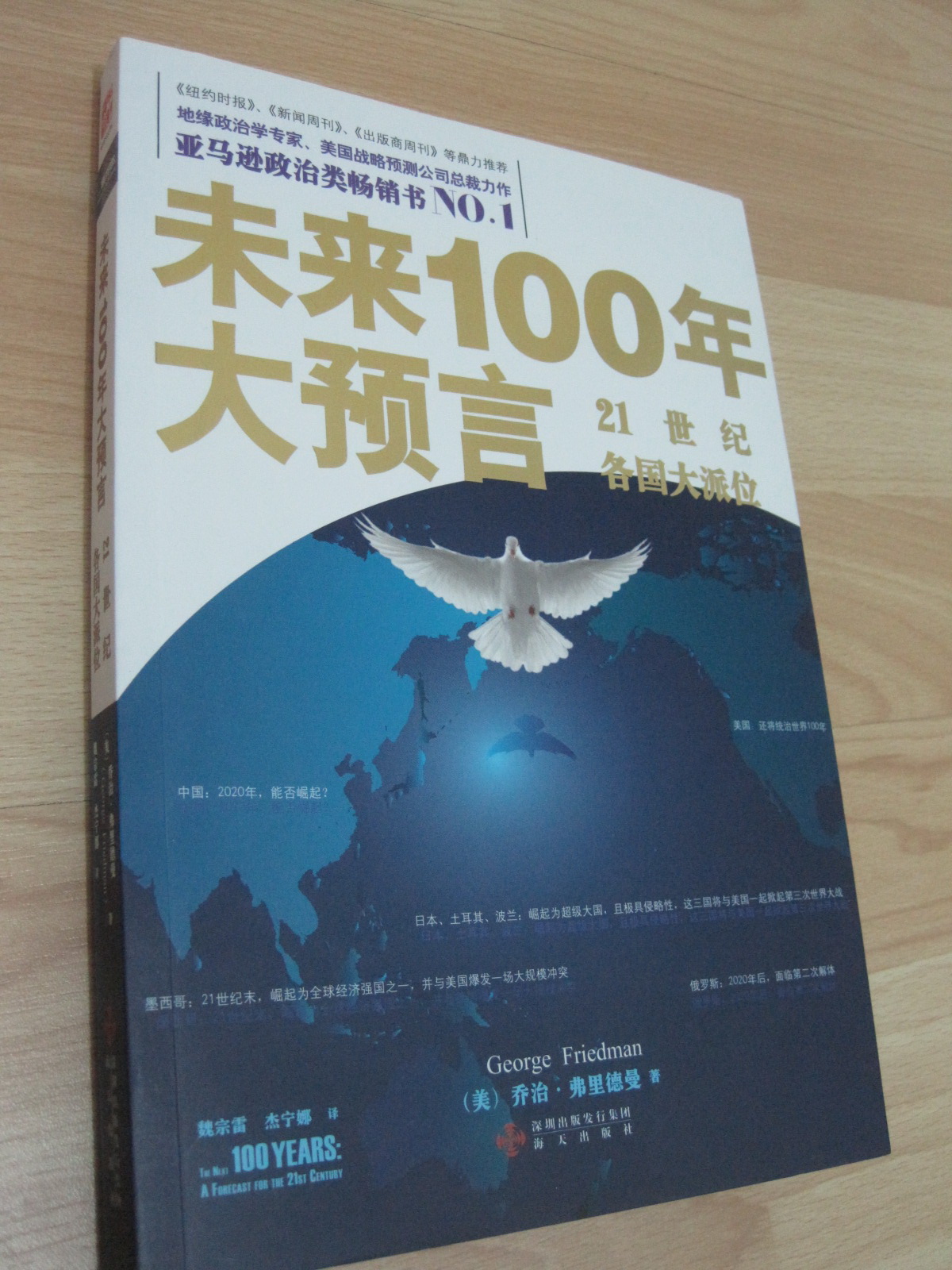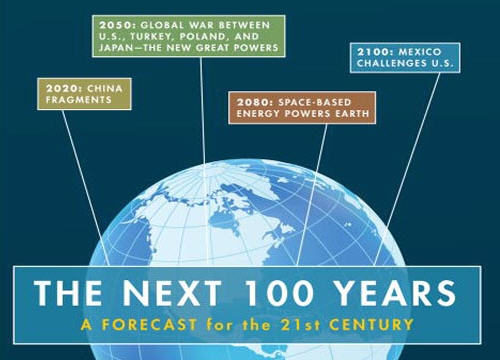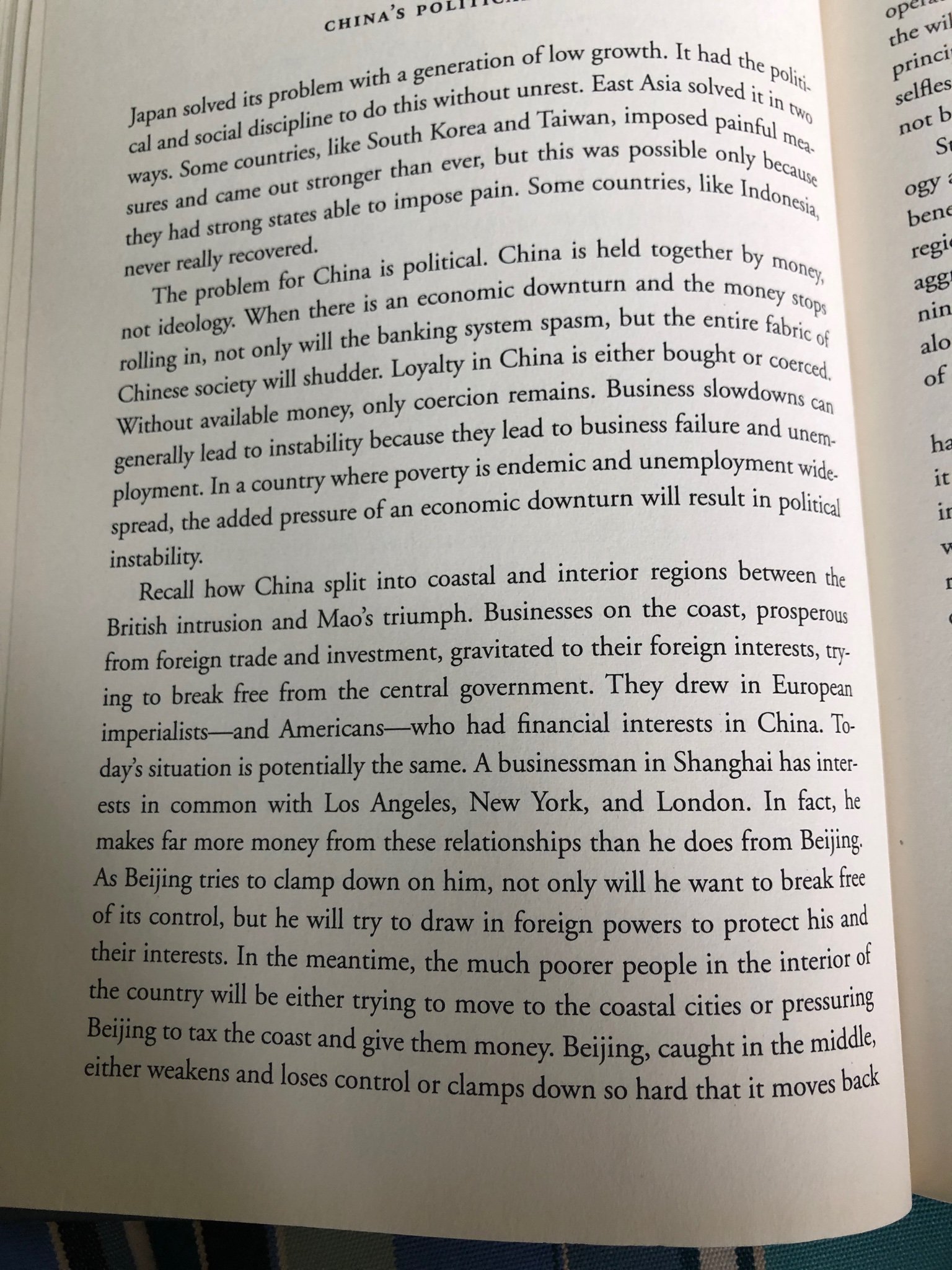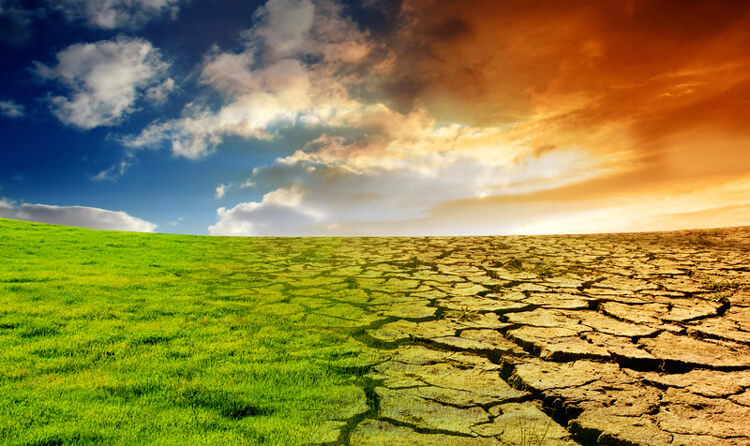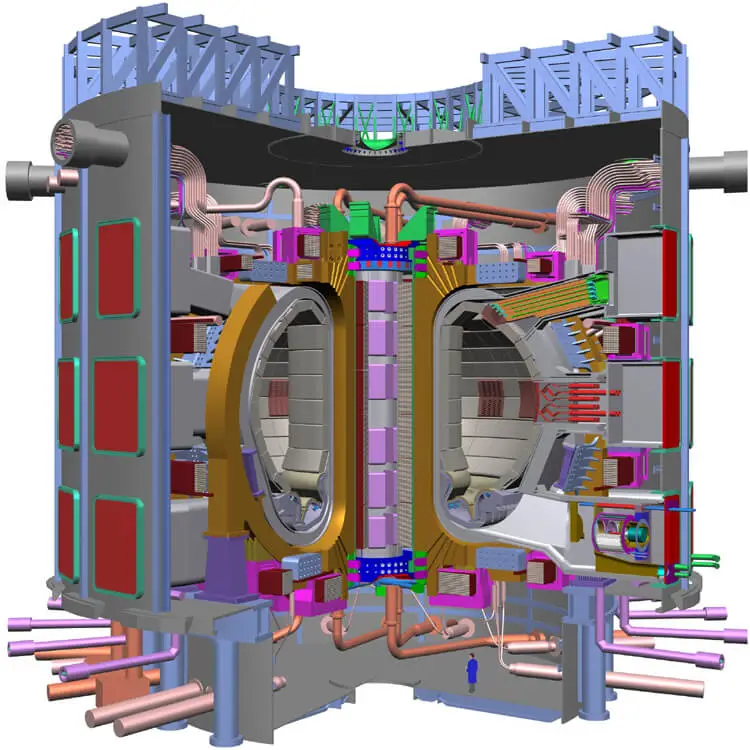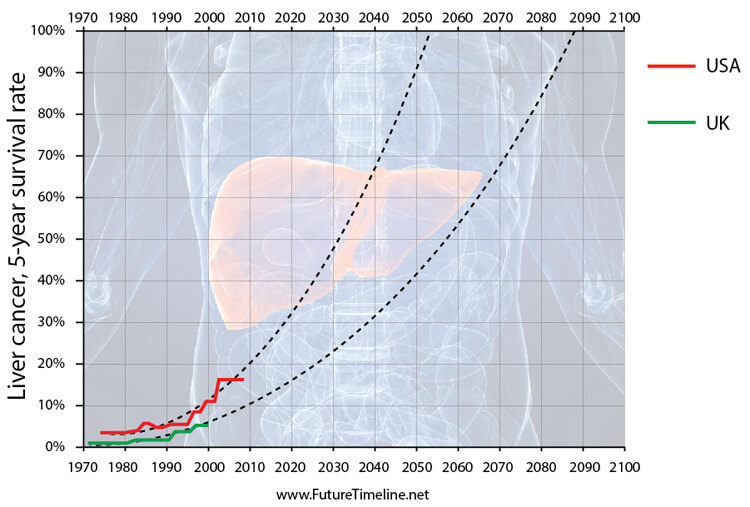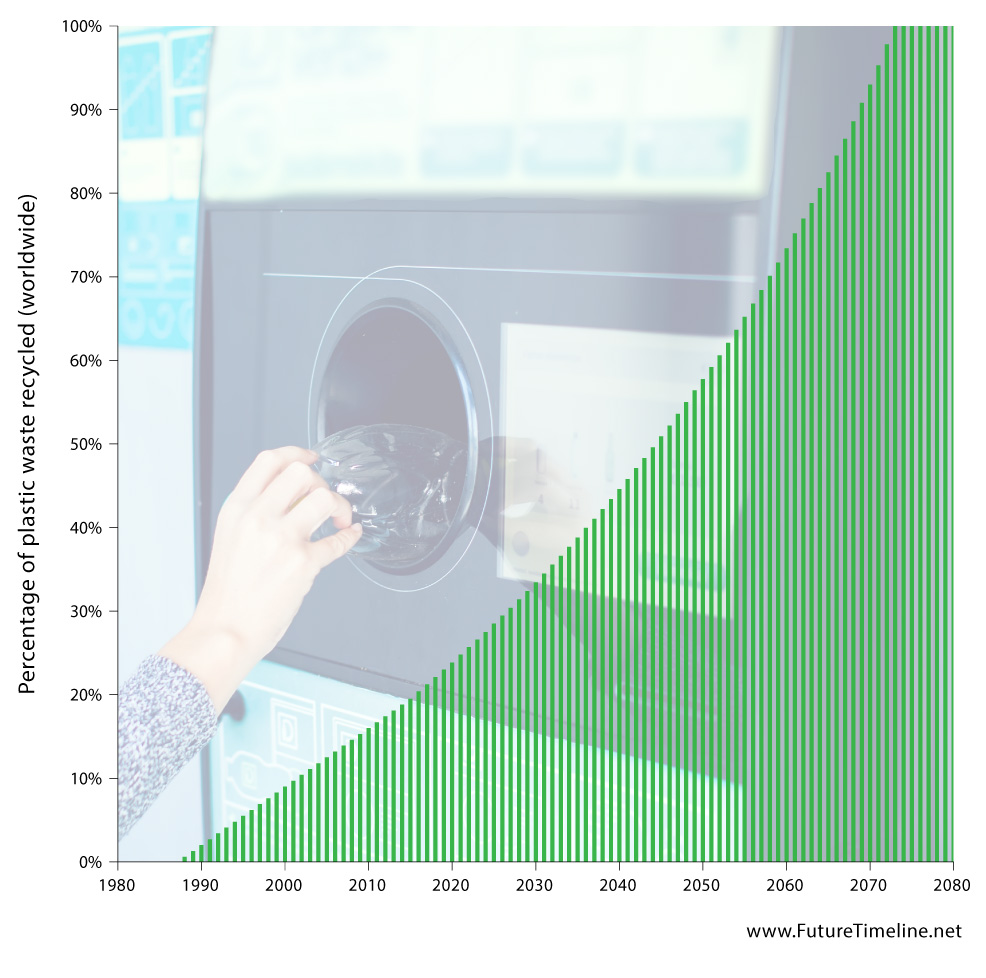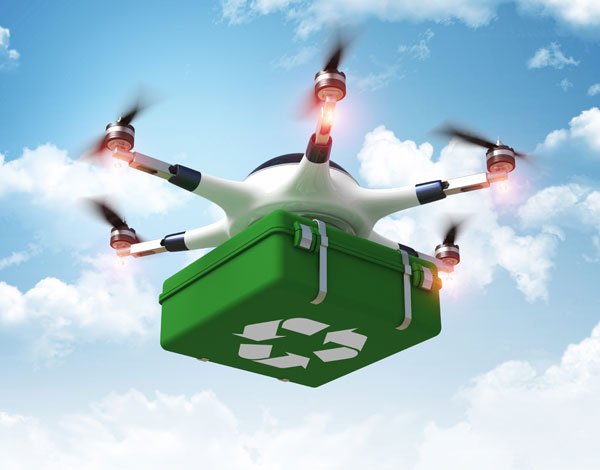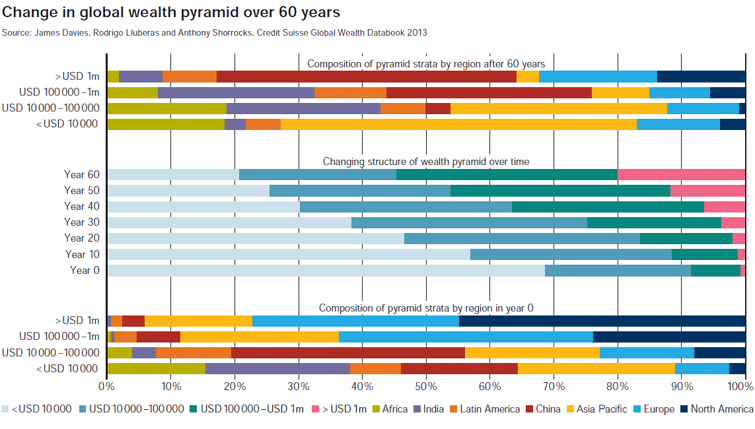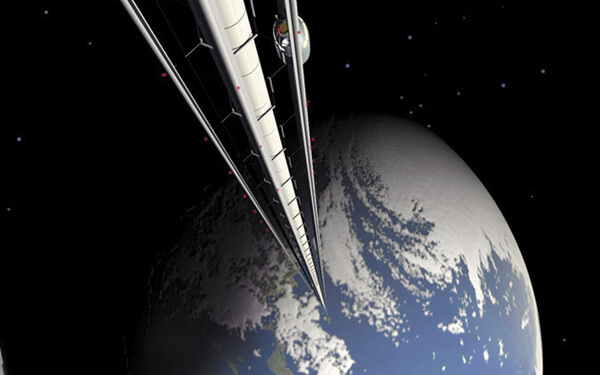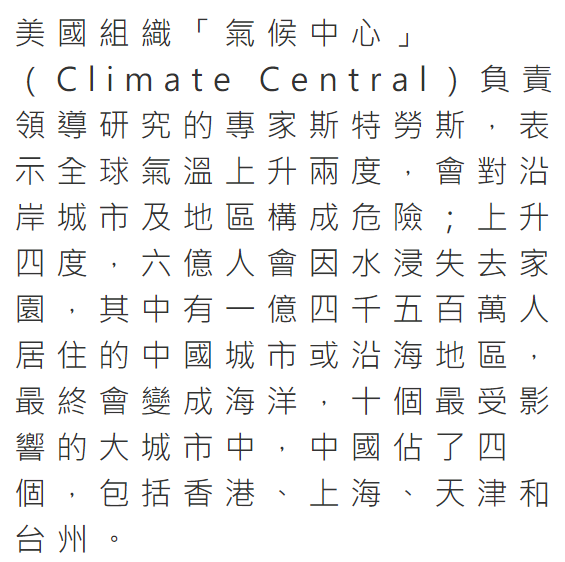| 回看1970展望2070伊斯蘭世界永生上海消失 |
| 送交者: Pascal 2019年12月31日17:30:30 於 [五 味 齋] 發送悄悄話 |
|
回看50年前1970 展望21世紀燦爛神奇的70年代 —— 伊斯蘭教徒治下的世界 人類早已永生 全球平均氣溫上升4° 數百座城市包括上海被海水淹沒消失 世界人口102.77億 伸向太空的天梯勝利建成
迎接偉大的七十年代 《人民日報》、《紅旗》雜誌、《解放軍報》 一九七〇年元旦社論
二十世紀六十年代過去了。全世界無產階級和革命人民,以豪邁的戰鬥步伐,跨進了偉大的七十年代。 放眼全球,展望未來,我國各族人民心潮澎湃,衷心祝願我們的偉大領袖、無產階級的革命導師毛主席萬壽無疆! 六十年代初期,毛主席曾經高瞻遠矚地指出:“從現在起,五十年內外到一百年內外,是世界上社會制度徹底變化的偉大時代,是一個翻天覆地的時代,是過去任何一個歷史時代都不能比擬的。”六十年代的歷史,雄辯地證實了毛主席這一偉大的預言。 過去的十年,是敵人一天天爛下去,我們一天天好起來的十年;是馬克思主義、列寧主義、毛澤東思想同現代修正主義公開論戰,激烈搏鬥,取得偉大勝利的十年;是全世界革命人民反對以美國為首的帝國主義、以蘇修為中心的現代修正主義和各國反動派的偉大鬥爭蓬勃發展的十年。 在這十年中,無產階級和廣大人民群眾的革命運動,在新的條件下,以排山倒海之勢,雷霆萬鈞之力,磅礴於全世界。民族解放運動一浪高一浪地向前推進,革命的馬克思列寧主義政黨和組織在鬥爭中日益發展。資本主義無可挽救地沒落下去,社會主義不可阻擋地興盛起來。偉大的社會主義中國,象巨人一樣屹立在世界的東方。歐洲的社會主義明燈阿爾巴尼亞,放射出更加燦爛的光輝。英雄的越南人民的鐵拳,把美帝國主義打得焦頭爛額。毛主席“槍桿子裡面出政權”的偉大真理,越來越廣闊地鼓舞着亞、非、拉地區人民的武裝鬥爭。帝國主義殖民體系的堤壩,一塊一塊地塌了下來。漫天的革命烽火已經燃燒到帝國主義的“心臟”地區。震撼西方的財政金融危機,日益嚴重、日益深化的經濟危機,使資本主義經濟更加病入膏肓。 舊世界風雨飄搖, 一座座火山爆發, 一頂頂王冠落地。 在整個地球上, 再也找不到一塊帝國主義的“安定的綠洲”了。 第二次世界大戰以後爬上世界資本主義霸主地位的美帝國主義,沒有過多久就從它的頂峰跌落下來。它擴軍備戰,到處侵略,到處建立軍事基地,把一根根絞索套在自己的脖子上,被全世界人民越勒越緊了。自稱世界“最富有”的美國,數以千萬計的人民越來越貧困和飢餓。美國無產階級以及廣大人民反對壟斷資本集團的鬥爭和美國黑人的抗暴鬥爭,使美國反動統治者惶惶不可終日。一任任的白宮主子,找不出一付挽救美帝國主義衰落的靈丹妙藥。曾經吹噓二十世紀是“美國世紀”的華爾街老闆們,無可奈何地哀嘆美國進入了“困難的年代”。美帝國主義的急劇沒落,突出地表明資本主義制度已經走上極其深刻的、新的總危機。 現代修正主義的中心——蘇修叛徒集團加速走向徹底破產。自以為不可一世的跳梁小丑赫魯曉夫,曾幾何時,變成了不齒於人類的渣滓。他的繼承者勃列日涅夫之流,更是一代不如一代,一年不如一年,陷入了內外交困的重重危機。他們對內實行法西斯專政,對外侵略擴張,徹底暴露了社會帝國主義的面目,激起了蘇聯人民和各國人民越來越強烈的反抗。蘇修社會帝國主義的出現,不過是帝國主義走向全面崩潰過程中的一個插曲。它既不能挽救整個帝國主義制度的覆滅,也不能挽救它自己的滅亡。所謂“勃列日涅夫主義”,歸根結底,不過是垂死的新殖民主義的變種而已。 同帝國主義、社會帝國主義一片衰微破敗的景象相反,在偉大領袖毛主席領導下,社會主義中國更加鞏固,更加繁榮,更加壯大,更加朝氣蓬勃。毛主席親自領導我們黨,同全世界馬克思列寧主義者一道展開的對現代修正主義的大論戰,從思想上、理論上和政治上為世界無產階級革命的更大勝利準備了條件。毛主席親自發動和親自領導的無產階級文化大革命的勝利,粉碎了帝國主義和修正主義在中國復辟資本主義的夢想,在國際共產主義運動史上,開闢了一條鞏固無產階級專政、將社會主義革命進行到底的光明大道。偉大的毛澤東思想在七億人民中空前大普及。中國共產黨第九次全國代表大會的深遠歷史影響,正在越來越充分 地顯示出來。我們偉大的社會主義祖國成為當代反帝反修的強大的政治力量,成為各國無產階級、被壓迫人民和被壓迫民族最可靠的朋友,成為世界革命的希望。 人民,只有人民,才是創造世界歷史的動力。經過六十年代的大動盪、大分化、大改組,世界的革命力量壯大了,階級陣線分明了。世界基本矛盾的新發展,必然要繼續引起革命。七十年代,將是人民革命風暴在全世界更大興起的年代,將是帝國主義在重重矛盾中加速崩潰的年代,將是全世界革命勢力同垂死掙扎的反革命勢力進行劇烈搏鬥的重要的年代。 不管美帝、蘇修怎樣互相勾結、互相爭奪勢力範圍, 不管它們施展多少陰謀詭計,發動什麼樣的侵略戰爭, 都逃脫不了註定滅亡的命運。它們的日子不會太長了。 都逃脫不了註定滅亡的命運。它們的日子不會太長了。 都逃脫不了註定滅亡的命運。它們的日子不會太長了。 毛主席教導我們:中國應當對於人類有較大的貢獻。在偉大領袖毛主席的領導下,我們偉大的黨,偉大的人民,偉大的國家,偉大的軍隊,一定能夠完成歷史賦予我們的光榮使命,一定不會辜負世界人民寄予我們的希望。新的一年裡,全黨、全軍、全國人民要更加緊密地團結在以毛主席為首、林副主席為副的黨中央的周圍,進一步用毛澤東思想武裝起來,用毛主席關於“提高警惕,保衛祖國”,“備戰、備荒、為人民”的偉大戰略思想推動斗、批、改,檢查斗、批、改,戒驕戒躁,更好更快地完成黨的“九大”提出的各項戰鬥任務。 當前,斗、批、改的群眾運動,正在各條戰線深入發展。毛主席提出的各項無產階級政策,正在進一步全面落實。具有無限生命力的無產階級新事物到處出現。我們要把活學活用毛澤東思想的偉大群眾運動,同斗、批、改各項工作結合起來。要緊緊抓住兩個階級、兩條道路、兩條路線鬥爭這個綱,把鞏固無產階級專政的根本任務落實到各個基層。要繼續開展革命大批判,肅清叛徒、內奸、工賊劉少奇的反革命修正主義路線的餘毒。要在思想文化領域裡高舉毛澤東思想偉大紅旗,繼續清除資產階級和一切剝削階級的思想影響;在政治領域中按照黨的政策做好清理階級隊伍的工作,加強對一小撮反革命勢力的專政;在經濟領域中鞏固和發展社會主義經濟基礎,有步驟地打擊資產階級的腐蝕和破壞。要把教育、科研、文藝、新聞、衛生等方面的革命堅持下去,深入下去,取得新的成果和新的經驗。 毛主席在“九大”期間一再指出:“一定要抓好典型。”“面上的工作要先抓好三分之一。”我們要堅決執行毛主席這個極其重要的指示,全面規劃,分期分批地、深入細緻地、積極而又慎重地做好鬥、批、改的各項工作。 在清理階級隊伍的基礎上,要抓緊整黨建黨。用毛主席關於無產階級專政下繼續革命的偉大理論建設我們的黨,是發展無產階級文化大革命偉大勝利的根本保證,是進一步鞏固無產階級專政的百年大計。在整黨建黨中,自始至終都要把思想整頓放在首位,認真地學習新黨章,對黨員和要求入黨的積極分子,認真地進行馬克思主義、列寧主義、毛澤東思想關於黨的學說的教育,進行關於領袖、政黨、政權、階級、群眾相互關係學說的教育,批判各種右的或極“左”的資產階級反動思潮。要正確地做好“吐故納新”的工作。每一個共產黨員,都要以毛主席的指示和新黨章的各項規定對照自己,徹底改造世界觀。 隨着斗、批、改的深入發展,一個工農業生產的新高潮正在出現。各級領導要站在群眾運動的前面,全面地貫徹執行毛主席提出的“鼓足幹勁,力爭上游,多快好省地建設社會主義”的總路線和“抓革命、促生產、促工作、促戰備”的偉大指示,使運動沿着毛澤東思想的軌道深入地、持久地向前發展。只要充分發揮工人階級、貧下中農和革命知識分子的積極性,團結一切可以團結的力量,充分發揮社會主義制度的優越性,我國工農業生產和科學技術,就能夠趕上和超過世界先進水平。要把毛主席提出的“自力更生”、“艱苦奮鬥”的方針,落實到每一個省、每一個縣、每一個基層單位、每一項事業。要注意調查研究經濟工作 中各項政策性的問題。訂計劃必須發動群眾,注意留有充分的餘地。 毛主席最近指出:“全世界人民團結起來,反對任何帝國主義,社會帝國主義發動的侵略戰爭,特別要反對以原子彈為武器的侵略戰爭!如果這種戰爭發生,全世界人民就應以革命戰爭消滅侵略戰爭,從現在起就要有所準備!” 毛主席這個偉大指示,以馬克思列寧主義的遠見,向全世界人民指出了鬥爭的方向,具有深遠的歷史意義和現實意義。帝國主義就是戰爭。全世界人民一定要百倍提高革命警惕!全中國人民一定要百倍提高革命警惕!我們要從精神上、物質上作好充分準備。要加強黨的一元化領導。各級領導機關要在思想上、組織上、作風上進一步實現無產階級革命化,精兵簡政,以適應戰備的需要。要鞏固和完善各級革命委員會,繼續加強革命的大聯合和革命的三結合,團結起來,共同對敵。要加強軍民團結和軍政團結。中國人民解放軍要繼續發揚光榮的革命傳統和全心全意為人民服務的精神,繼續做好“三支”“兩軍”工作,在政治上、 軍事上都要更進一步提高,堅持突出無產階級政治,全面落實四好,加強戰鬥力,隨時準備為保衛偉大社會主義祖國立新功。 同一切國家在和平共處五項原則的基礎上發展外交關係,這是我們長期以來的一貫政策,但是我們決不能容忍任何帝國主義、社會帝國主義侵占我國神聖領土。我們一定要解放祖國的神聖領土台灣!如果帝國主義、社會帝國主義敢於侵犯我國,我們就堅決把他們葬身在人民戰爭的汪洋大海之中! 革命在發展,人民在前進。一個沒有帝國主義、沒有資本主義、沒有剝削制度的新世界的曙光就在前頭。全世界無產者聯合起來,全世界無產階級和被壓迫人民、被壓迫民族聯合起來,下定決心,不怕犧牲,排除萬難,去爭取勝利! 偉大的、光榮的、正確的中國共產黨萬歲! 戰無不勝的馬克思主義、列寧主義、毛澤東思想萬歲! 我們偉大的領袖毛主席萬歲!萬萬歲!
中國因一個錢字而凝聚 亦會因一個錢字而分裂:
視頻鏈接: https://www.youtube.com/watch?v=r-8KV_GurLY
按住光標 高速掃描以下英文內容 2070 Islam is the world's dominant religion By 2070, Islam has overtaken Christianity to become the dominant religion.* More than a quarter of the world's population was Muslim by the 2020s* and this growth continued in subsequent decades. Most of the increase has occurred in sub-Saharan Africa with its high fertility rates, although these are beginning to stabilise now.* While the numbers of non-religious have continued to increase, when measured as a percentage of the global population their share has declined from 16.4% in 2010, to 13.2% in 2050 and less than 12% in 2070. Christians and Muslims each comprise about 32.3% by 2070, with Christians set to reach 33.8% and Muslims 34.9% by 2100.* India has overtaken Indonesia as the country with the largest number of Muslims – though India's even larger population of Hindus continue to outnumber Muslims in the region.*
Global average temperatures have risen by 4°C* Vast stores of methane, released from melting permafrost, have triggered an abrupt change in the Earth's climate.* The atmosphere has now shifted to pre-glacial/interglacial conditions which last prevailed over 34 million years ago.* CO2 levels have reached almost 700 parts per million – two and a half times pre-industrial levels.** This has resulted in a global average temperature increase of 4°C, with the Arctic region seeing rises as high as 15°C.* In many parts of the world, the limits for human adaptation are being exceeded.* Despite attempts to share food and resources between nations – and to accommodate the surge in refugee numbers – the sheer scale of this disaster is presenting enormous challenges, even with the technological base of the 2070s. The use of heavily modified GM crops, hydroponics, desalination and other techniques have allowed some regions to maintain a degree of stability. Nanofabricators are also being utilised in the more advanced societies. For many others, however, it's becoming impossible to sustain any kind of agriculture at all, due to the water loss,* soil depletion and other environmental impacts now being experienced.** The intensity of freak weather events has increased dramatically, with hurricanes and severe storms, extreme flooding and droughts becoming widespread. A number of countries near the equator have been abandoned, their people scattered. City-scale flooding disasters are now commonplace* as sea levels have risen a full metre,* sweeping away trillions of dollars' worth of real estate. The number of displaced persons is overwhelming the ability of international organisations and governments to cope. Although many refugees are surviving and resettling in higher or lower latitudes, even greater numbers are unable to complete the journey, or are denied border entry, resulting in alarming numbers of deaths from hunger, conflict and adverse environmental conditions. Traditional free market capitalism is facing enormous pressures and upheaval, as civilisation struggles to adapt to this new and rapidly changing world. Resource-based economies are evolving to take its place.** For too long, humans exploited their environment with little appreciation of long-term consequences. Nature is finally beginning to redress the balance.
Fusion power is widespread Most leading countries now have at least one fusion plant either commercially operational, or in the process of construction.* These reactors offer a clean, safe and abundant supply of energy.
Fully automated homes Buildings in developed nations have become highly automated and self-sufficient. In addition to robots, a typical new home now includes the following: A localised power supply. Energy can be generated by the building itself, via a combination of photovoltaics and piezoelectric materials. Walls, roofs and windows can absorb almost all wavelengths of light from the Sun with organic solar technology, turning it into heat and electricity. Friction generated by the occupant's footsteps – and various other kinetic processes – can also produce energy. This is converted and stored in any number of ways, from hydrogen to batteries. In countries where sunlight is less frequent, microturbines may be used in place of solar. On-site water production and waste management. Rain is captured by external guttering, then stored and converted into drinking water using nanofiltration systems. This is especially useful in regions prone to drought (which includes a substantial portion of the world by this time). If local water is in short supply, houses can serve as miniature reservoirs and filtration systems. Meanwhile, plastics and other kitchen waste can be placed in recycling machines, ground into extremely fine powder, then later re-used in nanofabricators. A multi-layered building envelope which provides a variety of dynamic effects. Windows can self-adjust their size and position – as well as their opacity – to optimise the level of natural light. In some of the more upmarket properties, the entire façade can morph its texture and appearance. Depending on the tastes of the occupant, this could transform into an art deco style, a classic Victorian building, or something entirely different. This form of "programmable matter" can even be designed by the occupant themselves and changed on demand. Air purification systems. Air within the home is kept fresh, purified and completely free of dust and microbes. Interactive surfaces. Holographic generators cover the whole interior of the property – including walls, doors, worktop surfaces, mirrors and shower cubicles. These intelligent surfaces can track the position of the occupant and display information whenever and wherever necessary. A person can read emails, see news reports and access the online world using virtually any surface in the house as a touch screen or mind control interface.* Detailed, real-time information on their health, personal lifestyle and daily schedules can also be displayed. This system has a variety of other functions, e.g. it can be used to locate personal items which may have been misplaced. Intelligent/self-maintaining appliances. Appliances that don't repair or maintain themselves in some way have become largely obsolete by now. It is very rare for a human engineer to be called to the house. A modest size. The world is becoming an ever more crowded place, with available land continuing to shrink due to overpopulation and environmental decline. In city centres, apartments tend to be highly minimalist and compact, with small footprints utilising every inch of space. Full immersion virtual reality is one method of adapting to this. Another is flexible room layouts that reconfigure themselves on demand. In earlier decades, this was achieved in some homes by using a sliding wall system.* Today, it can be done with morphable materials.
Five-year survival rates for liver cancer are approaching 100% In the early 21st century, liver cancer was the third most common cancer death in the world. Nearly 700,000 people died from the disease in 2008, accounting for 9% of all cancer deaths. Major risk factors included chronic infection with hepatitis B and C (accounting for 54% and 31% of cases, respectively), consumption of foods contaminated with aflatoxin, and heavy alcohol consumption. It was nearly three times more common in men than in women. In 2009, Japanese researchers began efforts to map the complete genome of liver cancer.* This paved the way for blood tests to spot tumours earlier, whilst also yielding new drug targets. The increasing use of nanoparticle carriers – and eventually nanobots giving precise control and delivery of drugs – also greatly improved survival rates. Despite the global chaos unfolding at this point in history, scientific knowledge continues to advance incrementally. By 2070, five-year survival rates for liver cancer are reaching 100% in many countries.**
2072 Advanced nanotech clothing Fifty years have passed since the mainstream appearance of nanotech clothing. During that time it has made extraordinary improvements in utility, power and sophistication. Modern fabrics have built upon the abilities of previous generations, perfecting many of the technologies involved. Today, a complex blend of nanotechnology, biotechnology, claytronics, metamaterials and other components has yielded a type of clothing previously confined to the realm of science fiction. Though mostly restricted to specialised personnel, government forces and the elite, a number of these suits are finding their way into the mainstream. Construction via self-assembling nanotechnology has been around for a number of decades. Until now, the process was only practical using bulky and/or conspicuous machinery, nanofabricators, or objects suspended in tanks of catalytic fluids.* However, recent advances in nanorobotics have allowed for more subtle and rapid construction of macro-scale objects in a more compact form-factor and with less impact on Earth's natural resources. As happened with early nanotech adoption in the 2020s, one of the easiest and most common applications has been in fabrics. Today, a high-end home "closet" may consist of simply a thin surface or pad built into the wall or floor, concealing a mass of nanobots and molecular building materials. A user can stand on or touch this surface and issue instructions to the machine (through voice command or virtual telepathy) for what to create. Each nanobot is then programmed with the final clothing design and set into motion. The process begins with each nanobot organising and categorising each building molecule, based on the aggregate material needed and where each piece will be located in the finished product. The nanobots – also called "foglets" – then begin interlocking with themselves, forming a basic "skeleton" on which building molecules can be attached.* As more and more nanobots and molecules are added on, thousands of individual fibres begin to form out of the machine's surface. These grow up and around the person's body, crossing each other to create a weave pattern, before finally taking the shape of traditional clothing. The result is a basic structure around which nanobots then construct the more advanced and customised features. Depending on the outfit's function, the original fibres can be interlaced with photovoltaics, piezoelectric nanowire, carbon nanotubes, metamaterials, claytronics or any number of other useful materials. Tiny electronic devices can be added for communication or medical purposes. This whole process is completed in a matter of seconds. With such detail and control, fabric of this nature confers the wearer an array of conveniences. In earlier decades, this technology was limited to relatively simple functions, like colour and texture modifications.* Today, it is almost indistinguishable from magic. Complete wardrobes are no longer necessary, since one garment performs the function of many, transforming into an endless variety of styles and shapes. Most outfits are self-cleaning, self-fragrancing and rarely if ever need to be washed.** They can instantly adjust themselves in emergencies – becoming harder than steel to stop a knife or bullet; cushion-like in the event of accidents or falls. If a person is injured, the fabric can administer life-saving drugs and medical nanobots, or contract to seal a wound.* A drowning person can be made safe. Fire-fighters and other rescue workers are completely protected from hazards such as fire or radiation. This is also useful in space, protecting people from sudden changes in air pressure, micrometeorites, cosmic rays and other hazards. Medical devices included in these outfits monitor for disease at all times, catching the earliest signs of cancer or infection and alerting the wearer before any damage is done.* Whatever power is needed for the various functions is supplied by a combination of piezoelectric and photovoltaic components embedded throughout the clothing material. Some of these aforementioned comforts had already been available in earlier decades, but were simpler and fewer – usually limited to just one, or a small number within each item of clothing. Today, however, all of them can be fully integrated and combined together into a single suit, created and maintained via swarms of intelligent foglets. As this technology evolves further, it becomes a permanent part of some peoples' physiology, almost like a second skin.*
Click to view animation
Picotechnology is becoming practical Technology on the scale of trillionths of a metre (10-12) is becoming practical now.* Known as "picotechnology", this is orders of magnitude smaller than nanotechnology of earlier decades.* Among other applications, it allows the structure and properties of individual atoms to be altered via manipulation of energy states within electrons. This can produce metastable states with highly unusual properties, creating new and exotic forms of matter.
2073 Plastic recycling rates are approaching 100% worldwide By the early 2070s, plastic recycling is ubiquitous globally. Although some of the most rural and isolated areas still lack the required infrastructure and facilities, they now represent a negligible percentage. Belgian chemist Leo Baekeland invented the world's first synthetic plastic, Bakelite, in 1907. Improvements in chemical technology led to an explosion of new types of plastic, with mainstream adoption beginning in the 1940s and 50s. Production expanded at a phenomenal rate during the second half of the 20th century – from two million tons annually in 1950, to more than 200 million tons each year by 2000. With no end in sight to this upward trajectory and in light of concerns over its slow decomposition after disposal, as well as its toxicity, recycling emerged as a solution from the 1980s onwards. This was more environmentally friendly than incineration, or waste-to-energy methods, which had also begun some years before. However, even with both recycling and waste-to-energy systems in place, handling the mountains of plastic waste generated each year was proving to be a formidable challenge. Researchers noted the appearance of a "Great Pacific garbage patch", a gyre of marine debris in the north central Pacific Ocean estimated to contain over 1.8 trillion plastic fragments. By the early 21st century, this was having a substantial impact on seabirds, fish and other life in the food chain with implications for human health too. In 2019, plastic even appeared at the bottom of the Mariana Trench, during a deep ocean expedition. Scientists calculated that plastic waste could exceed fish biomass by 2050, unless major international efforts reversed this trend. More ominously, plastic pollution was found to harm the growth, photosynthesis and oxygen production of Prochlorococcus – the ocean's most abundant photosynthetic bacteria – responsible for 10% of oxygen breathed by humans. This bleak picture was reinforced by wildlife television documentaries, such as those narrated by the popular naturalist David Attenborough, broadcasting the uncomfortable reality to millions of viewers. The public was becoming more and more awake to the scale and urgency of this crisis. Recycling proved to be surprisingly popular, with a growing number of countries willing to introduce policies. In addition to routine collections of household waste by local governments, more ambitious measures were being adopted at regional and national levels. Gradually, the percentage of discarded plastic began to fall, while the recycled proportion increased. This trend continued through the 21st century.*
Japan was among the world leaders in plastic recycling. Its plastic waste utilisation rate increased from 39% in 1996, to 73% in 2006 and then 90% by the end of the 2010s. This figure approached 100% by the mid-2020s, making Japan one of the first nations to recycle essentially all of its plastic waste. Key to Japan's success was the passing of several recycling laws from the late 1990s onwards, mandating businesses and consumers to separate plastic waste, along with public awareness and education campaigns on the benefits of recycling. This occurred in response to a shortage of landfill space, with Japan being a relatively crowded nation of high population density. New technology also helped to convert an increasingly wide range of waste products into reusable items, such as PET bottles. European Union (EU) member states were making progress too, with more than 40% of their plastic packaging waste recycled in 2016, easily surpassing the EU's minimum target of 22.5%. Among EU member states, the Czech Republic ranked on the top with a recycling rate of 51% in 2014, followed closely by Germany, the Netherlands, Sweden and Ireland. The European Circular Economy Package (CEP) targets were set at 50% by 2025 and 55% by 2030 – alongside a goal of 100% for packaging, specifically – with a ban on various other single-use products made of plastic where alternatives existed.* In the UK, charges were introduced for plastic carrier bags, leading to a nearly 90% drop in single-use bags. The manufacture and sale of cosmetics and personal care products with microbeads (solid plastic particles of less than a millimetre in their largest dimension) was banned, followed by plastic straws and cotton buds. Dozens of companies, including supermarket giant Asda, signed up to the UK Plastics Pact aiming to cut plastic pollution by 2025. Meanwhile, the government pledged to eradicate all "avoidable" plastic waste throughout the country by 2042.* In the United States, no federal law existed to mandate recycling, with state and local governments introducing their own requirements. Only around 10% of plastic was recycled as of 2020, but a long-term plan by the American Chemistry Council proposed 100% of plastics packaging to be re-used, recycled or recovered by 2040. To achieve this, plastic resin producers would focus on six key areas: designing new products for greater efficiency, recycling and reuse; developing new technologies and systems for collecting, sorting, recycling and recovering materials; making it easier for more consumers to participate in recycling and recovery programs; expanding the types of plastics collected and repurposed; aligning products with key end markets; and expanding awareness that used plastics are valuable resources awaiting their next use. With increasing pressure from both consumers and governments, hundreds of the world's leading packaging brands committed to ensure that 100% of their plastic packaging could be reused, recycled or composted by 2025.* This momentum was sustained into the 2030s and beyond, spreading to recently developed economies with higher incomes, now able to afford the necessary waste management infrastructure. Regions in Africa, the Middle East and Southeast Asia were rapidly catching up with the West, and viewed environmental protection as a higher priority than before. In the 2010s, some had already begun to turn away foreign waste shipments, dumped on them from far away.** An increase in public recycling bins, plastic bottle banks, reverse vending machines (with voucher or cash incentives), office workplace recycling schemes and other such measures all contributed to the ongoing, upward trend in global recycling. At the same time, new production methods were allowing bioplastics to be manufactured without the need for fossil fuels and to biodegrade easily. Thanks to advances in science and technology, this was becoming possible even for some types of plastic that had traditionally been regarded as extremely difficult to break down, convert and reuse. Automation, robotics, AI and machine learning helped to improve the filtering and sorting capabilities at waste treatment plants. However, even low-tech solutions were able to combat the plastic problem: supermarkets in Thailand and Vietnam, for example, used banana leaves as a packaging alternative.* By 2050, most countries had either substantially reduced or even eliminated plastic entering landfills. This left the problem of incineration, which had grown in parallel with recycling at a similar rate during the late 20th and early 21st century. New regulations and international treaties to restrict emissions from plastic incineration were combining with even greater improvements in waste collection and separation. This led to the percentage of recycled plastic overtaking that of incinerated material. Networks of orbiting satellites – equipped with powerful sensors and ultra-high resolution and zoom capabilities – kept a watchful eye on ground activities, to monitor emissions and ensure compliance. Gradually, plastic waste incineration disappeared from both developed and developing countries as the economic, social and environmental benefits made more and more sense.* Other advances have emerged in recent years. Among them are a new generation of domestic appliances for dealing with household waste, now able to deconstruct and recycle a seemingly infinite variety of plastic products. Inexpensive, compact and easy to use, these are typically desktop machines in the same form-factor as a 3D printer, offering the dual functions of assembly and disassembly. As well as being popular in the home, they are found in many public venues and workplaces. Alongside these high-tech machines are regular drone and robotic patrols in towns and cities, which can identify and pick up discarded litter – often within a matter of minutes. The world of 2073 is a cleaner and tidier place. Challenges remain outside human-inhabited areas, however. The world's oceans, for example, remain in a dire state, being much more difficult to access and taking longer to restore. Those fragments of plastic that lie undiscovered will persist in ecosystems for another 500 years.
The number of trillionaires in the world exceeds 10 The world's first trillionaire had emerged in the 2030s. The entire top 10 of the Forbes rich list is now composed of such individuals.* Due in part to inflation, 20% of the global adult population now possesses a net worth of US$1 million or more. The rich have also become younger, more female and less Western.
2075-2080 The first space elevator is becoming operational The idea of a space elevator had been around as early as 1895, when Russian scientist Konstantin Tsiolkovsky first explored the concept. Inspired by the newly-built Eiffel Tower, he described a free-standing structure reaching from ground level into geostationary orbit. Rising some 36,000 km (22,000 mi) above the equator and following the direction of Earth's rotation, it would have an orbital period of exactly one day and thus be maintained in a fixed position. A number of more detailed proposals emerged in the mid-late 20th century, as the Space Race got underway and manned trips to Earth orbit became increasingly routine. It was hoped that a space elevator could drastically reduce the cost of getting into orbit – revolutionising access to near-Earth space, the Moon, Mars and beyond. However, the upfront investment and level of technology required meant that such a project was rendered impractical for now, confining it to the realm of science fiction. By the early decades of the 21st century, the concept was being taken more seriously, due to progress being made with carbon nanotubes. These cylindrical molecules offered ways of synthesising an ultra-strong material with sufficiently high tensile strength and sufficiently low density for the elevator cable. However, they could only be produced at extremely small scales. In 2004, the record length for a single-wall nanotube was just 4 cm. Although highly promising, further research would be needed to refine the manufacturing process. It was not until the 2040s* that material for a practical, full-length cable became technically feasible, with the required tensile strength of 130 gigapascals (GPa). Even then, design challenges persisted – such as how to nullify dangerous vibrations in the cable, triggered by gravitational tugs from the Moon and Sun, along with pressure from gusts of solar wind.** Major legal and financial hurdles also needed to be overcome – requiring international agreements on safety, security and compensation in the event of an accident or terrorist incident. The insurance arrangements were of particular concern, given the potential for large-scale catastrophe if something went wrong. In the interim, smaller experimental structures were built, demonstrating the basic concept at lower altitudes. These would eventually pave the way to a larger and more advanced design.
Click to enlarge
By the late 2070s,*** following 15 years of construction,* a space elevator reaching from the Earth's surface into geostationary orbit has become fully operational. The construction process involves placing a spacecraft at a fixed position – 35,786 km (22,236 mi) above the equator – then gradually extending a tether down to "grow" the cable towards Earth. It also extends upwards from this point – to over 47,000 km (29,204 mi) – a height at which objects can escape the pull of gravity altogether. A large counterweight is placed at this outer end to keep it taut. Locations that are most suitable as ground stations include French Guiana, Central Africa, Sri Lanka and Indonesia. As with most forms of transport and infrastructure in the late 21st century, the space elevator is controlled by artificial intelligence, which constantly monitors and maintains the structure throughout. If necessary, robots can be dispatched to fix problems in the cable or other components, from ground level to the cold vacuum of space. This is rarely required, however, due to the efficiency and safety mechanisms in the design. A major space boom is now underway, as people and cargo can be delivered to orbit at vastly reduced costs, compared with traditional launches. Over 1,000 tons of material can be lifted in a single day, greater than the weight of the International Space Station, which took over a decade to build at the start of the century.* Although relatively slow – taking many hours to ascend* – the ride is much smoother than conventional rockets, with no high-G forces or explosives. Upon leaving the atmosphere and reaching Low Earth Orbit, between 160 km (99 mi) and 2,000 km (1,200 mi), cargo or passengers can be transferred to enter their own orbit around Earth. Alternatively, they can be jettisoned beyond geosynchronous orbit, in craft moving at sufficient speed to escape the planet's gravity, travelling onward to more remote destinations such as the Moon or Mars. In the decades ahead, additional space elevators become operational above Earth, the Moon, Mars and elsewhere in the Solar System,* with a considerable reduction in costs and technical risks. Construction is also made easier by lower gravity: 0.16 g for the Moon and 0.38 g on Mars. Further into the future, space elevators are rendered obsolete by teleportation and similar technologies.
上海徹底被海水淹沒消失 Shanghai, China17.5 million people affected “Shanghai is completely gone – I’d have to move to Tibet!” says resident Wang Liubin, when he is shown projections for the city after 3C of global warming. When it comes to flooding, the coastal city is one of the world’s most vulnerable. Now one of the world’s biggest ports, the former fishing village is bordered by the Yangtze river in the north and divided through the middle by the Huangpu river; the municipality involves several islands, two long coastlines, shipping ports, and miles of canals, rivers, and waterways. In 2012, a report from a team of UK and Dutch scientists declared Shanghai the most vulnerable major city in the world to serious flooding, based on factors such as numbers of people living close to the coastline, time needed to recover from flooding, and measures to prevent floodwater. According to Climate Central projections, 17.5 million people could be displaced by rising waters if global temperatures increase by 3C. Projections show the vast majority of the city could eventually be submerged in water, including much of the downtown area, landmarks such as the Lujiazui skyline and the historical Bund, both airports, and the entirety of its outlying Chongming Island. Since 2012, the government has been making steady inroads to tackle the threat, including building China’s largest deepwater drainage system beneath the Suzhou Creek waterway, made up of 15km of pipes to drain rainwater across a 58 sq km area. It has also rolled out a 40bn yuan (£5bn) River Flood Discharge project which will stretch for 120km between Lake Taihu and the Huangpu river to try and mitigate the risk of the upstream lake flooding. Flood prevention walls are being built along the waterfront – in places so high the river is blocked from view – and 200km more are promised across the city’s outlying districts. Flood controls have been put in place along the famous Bund waterfront, where the walkway has been raised to help counter a flood risk, as well as a series of water controls and dams. Helen Roxburgh in Shanghai ******************************************
針對上述英國反黨分子 Craig Hamilton-Parker 的 反人類預言,萬維意見領袖、輿情導航舵手 蜜蜂花博作出了重要批示: 2020 —— 中國屁事沒有!
http://news.creaders.net/china/2019/12/25/2171712.html |
|
|
|
|
 |
 |
| 實用資訊 | |





